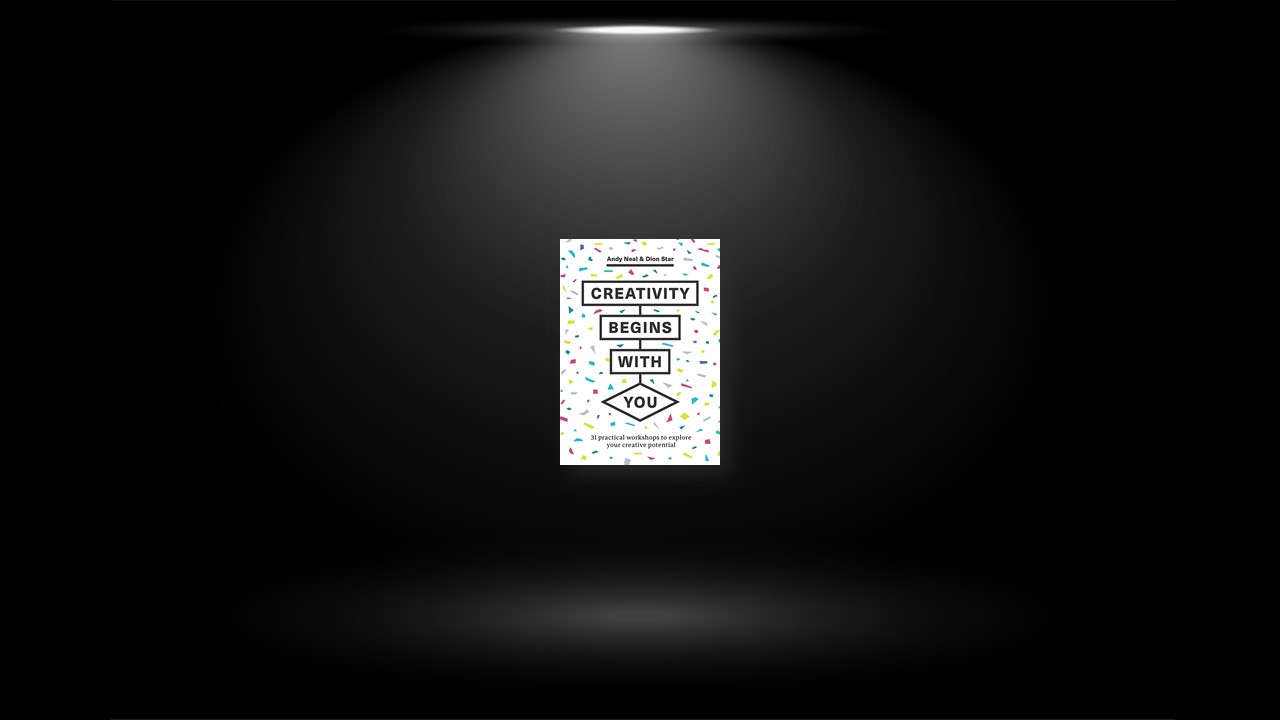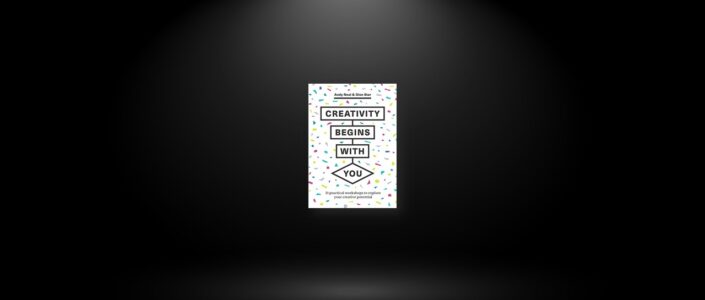Identity
Our formative years in education shape many of us in a particular way, essentially rooting us in a worldview that generally assumes there’s a right and a wrong way of doing things. Choices are often presented as black or white, as nature or nurture, left wing or right wing, true or false, and these dualistic views can create a conceptual division in the way we think about everything – including creativity. This is important because most of us would agree that a central quality of creativity is its capacity to embrace possibility (the grey) and, as such, any dualistic bias can limit our potential to grow creatively. There is a real chance that we naturally polarize creative choices into an either/or scenario (reducing the expansive possibility into a reductive yes or no), without ever being aware of it. If you’ve ever reflected on your work, thinking ‘Is this right?’ out of a fear of getting it ‘wrong’, you’re probably thinking dualistically. We all tend to question our work, and that’s OK – questions are good. It’s what we do with them, however, that’s significant in the long term.
We are all unique, and this uniqueness is, we believe, fundamental to understanding how we think about creativity. Our identity shapes an expansive, one-of-a-kind view of the world that we need to protect, celebrate and nurture. By extension, there are processes – multiple ways of engaging in creative practice – and the journey to discover what works for you is as important as the work you create, if not more so.
Beyond this, the qualities that define your existing practice – your manifesto – are your creative ground. This is the foundation that you build upon, so understanding its strengths (and weaknesses) is vital to the longevity of your craft. And central to this self-reflection is acknowledging that there’s always resistance to our creative growth. However, understanding our enemy (our self) is integral to moving forward, and often the liberating act that leads to significant positive change.
Habit
We believe too much in creativity not to suppose that there are a multitude of creative methods, models or ways of operating as a creative person. Too often, in the conversations surrounding the subject, we’re told what to do, how to behave, what the convention is or what a particular ‘magic formula’ might be. The commodification of creative thinking through attempts to package and market a repeatable formula (that often promises to guarantee success) compromises creativity in a way that misses a fundamental point: there is no one true creative process. As the proverbial saying goes, there are many ways to skin a cat (although we don’t encourage felicide in any way!).
To better prepare ourselves to be creative, we believe it’s essential to be mindful of the social structures and mechanisms that frame how people create. It’s vital to first view the patterns, constraints or routines we (and others) apply to our own practice. Only then are we able to make up our minds and consciously choose our own way of operating.
The way we respond to any particular problem is based on our collected and stored frames of reference. If you have ever burnt your hand in a fire, on seeing fire again, the memory of that previous experience will prevent you from repeating the action. Our creativity works in the same way. When confronted with a specific problem, we develop a tendency to respond in a particular way. Once our response has been laid down several times, it becomes a pathway.
If we build on the Greek concept of techne tou biou and imagine the design of our daily routines and working practices as an artwork in its own right, what opportunities might this provide for framing our own creative experiences? Yes, the novelty of it may make our lives more interesting (and surely it’s worth the effort for this alone), but will it make us more creative? A colleague of the authors’, Lizzie Ridout, often encourages students to ‘treat everything you do like an artwork’, whether it’s sending an email, leaving a thank you note or baking a cake. Every activity holds within it a creative opportunity and an aesthetic meaning. If this truly is the case, then spending time crafting our simple daily routines is undoubtedly worthy of our attention.
For many of us, these new routines can be quite simple; their benefit is more to do with the repetition and discipline of a set timetable to live by than with anything particularly innovative about the actions involved. Creating a set routine can be a survival technique for many people – without setting the right conditions, creativity can become too much of a struggle. It’s this regime of discipline that sets the stage for the arrival of creativity. Order leads to action. Structure leads to chance.
Creative work results from the combination of ideas and craft – the will of meaning towards form. If we propose a puzzle to solve (in bringing form to our ideas), the focus is on the process itself and the joy of figuring it out, rather than how it’s ultimately achieved. Often, the more difficult the puzzle, the better it feels to finally solve it. Or, as Queneau said, ‘the more intricate the labyrinth, the happier the rat who escapes from it.’
Writing briefs for ourselves, applying formal constraints to our approach, systematically challenging, changing and reordering our daily routines and rituals are all attempts to create the perfect labyrinth from which we will escape.
Play
We’re all in a unique position because we can choose how to be creative. We can all take ourselves (and our work) waaaay too seriously. Academia is often guilty of this, and this book is, in part, an attempt to redress the balance. Work environments, even in the creative industries, can often feel a little stuffy. People can also feel stifled by the weight of responsibility or stressed by the pressures associated with deadlines. It seems that learning is a serious business, but it doesn’t need to be. And, as we’ve tried to explain, it’s better for us if it’s not. So, as a reminder:
1 | Humans need to be active and to explore. So, adopt a playful attitude towards your activity and exploration. This is as much a physical action as a mental one, so move around in both domains.
2 | An essential function of play is to prepare you for the unexpected. So focus on your intuitive responsiveness to the unexpected and be ready to improvise. Trust your intuition; trust your gut feeling.
3 | Immersion and play are great catalysts for creativity. As a result of this – almost as a by-product – they can be catalysts for our wellbeing. So, forget the outcome and focus on the play.
4 | Creative games provide a safe framework for us to develop new ideas, drawing out our natural curiosity and fostering imagination. So seek out pleasure in pattern-finding in your play.
Finally, play makes us more active, it makes us more open to exploration, it makes us laugh, and it makes us happy. So be playful and capricious, cheerful and curious, fanciful, fantastic, frisky, joyous, merry, mischievous, peculiar, spirited, spontaneous, sprightly, vivacious, whimsical and zestful.


